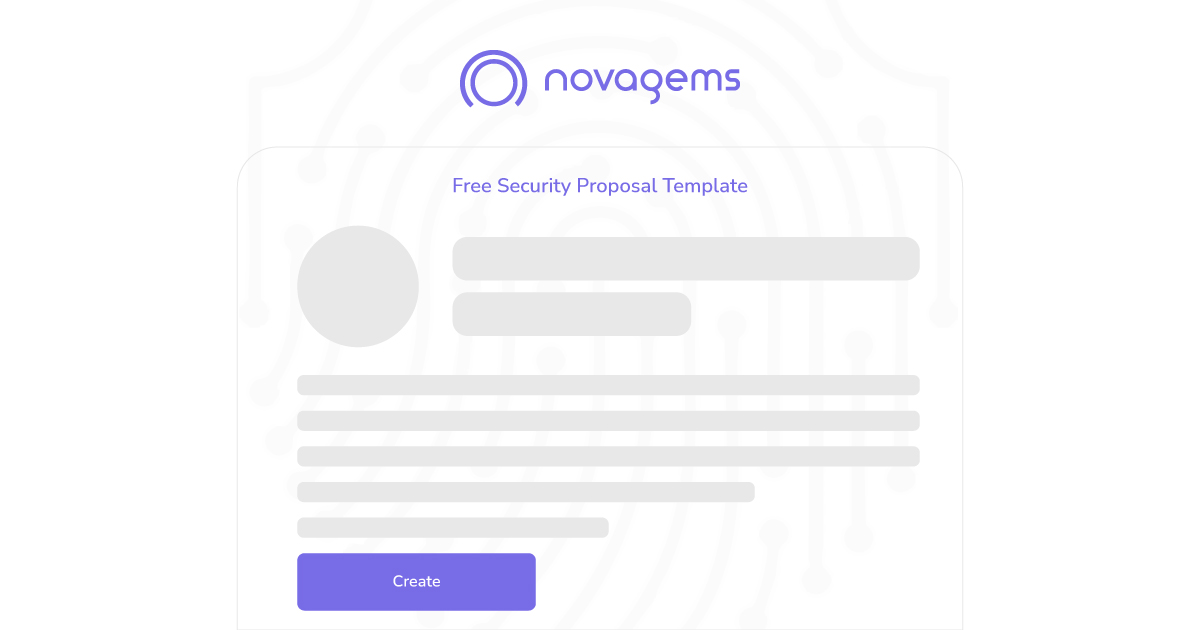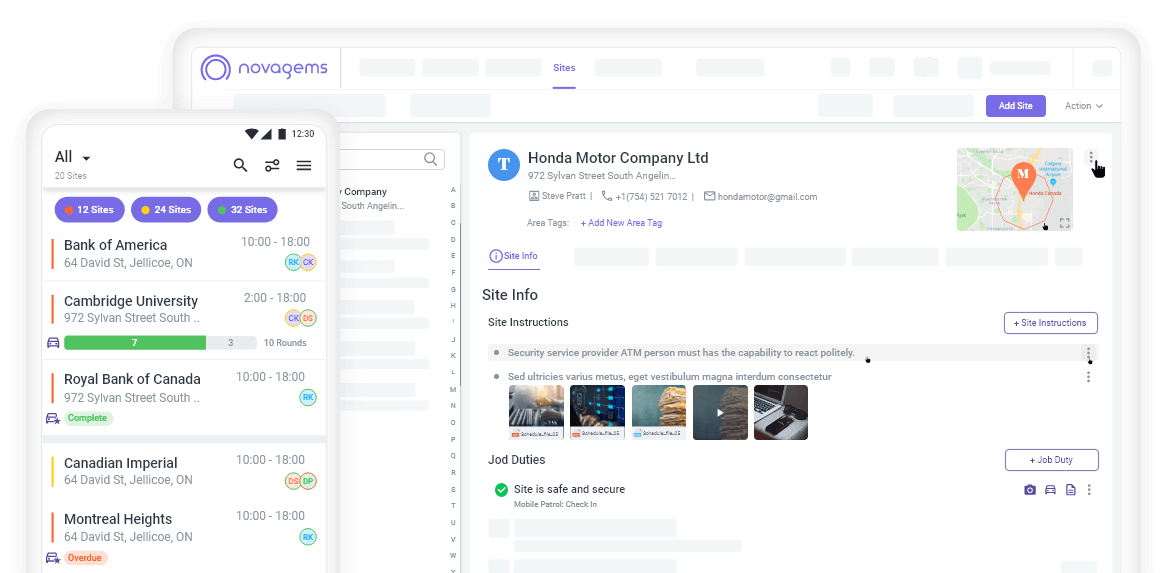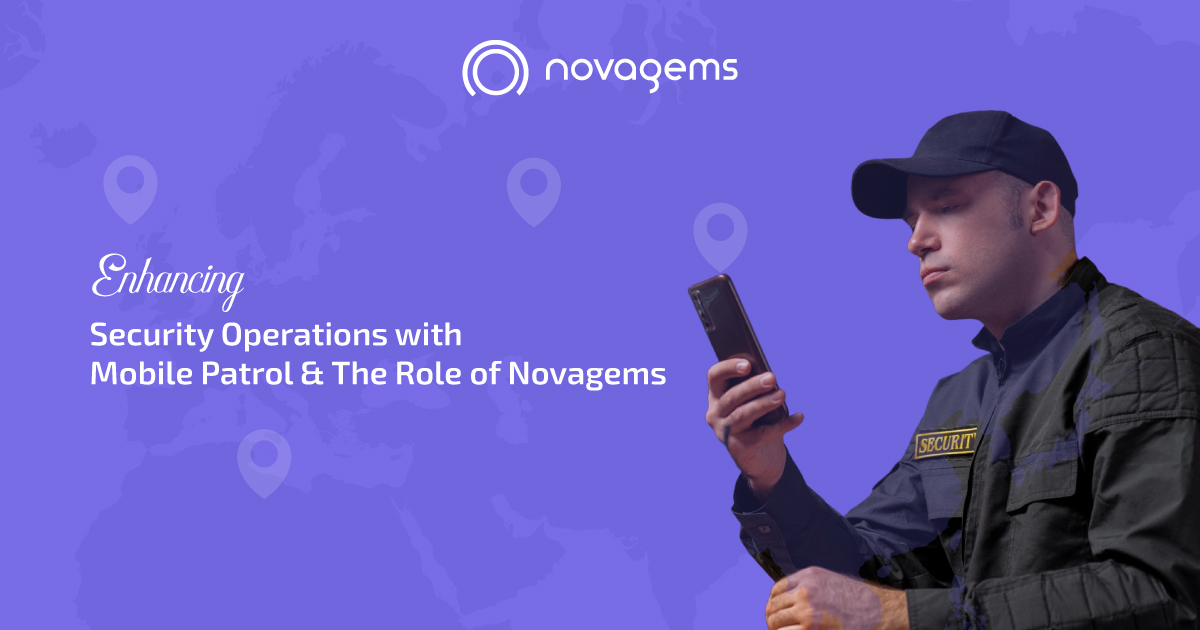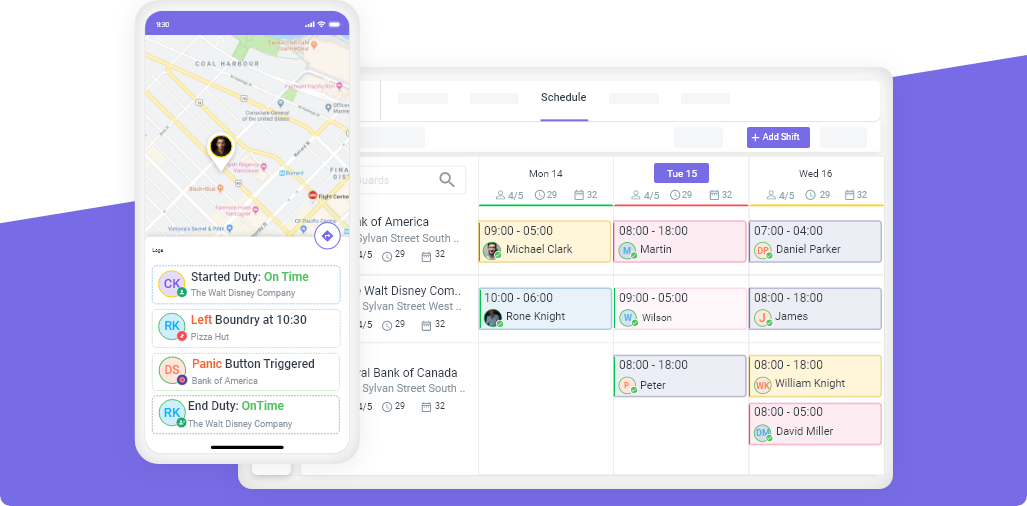Free security proposal template & how to create one
Wed, Jul 30, 2025
Read in 11 minutes

Winning new clients in the security industry isn’t just about having the best guards or the most reliable tech—it’s also about presenting your services professionally and clearly. That’s where a well-written security proposal template comes into play. A clear, customized proposal helps you stand out from competitors, build trust with potential clients, and showcase your ability to meet site-specific needs. Whether you’re bidding for a short-term event or a long-term facility contract, the way you present your security guard services can make or break the deal. The global security services market was valued at US$132.11 billion in 2022 and is expected to grow at a CAGR of 6.2% till 2030, reaching around US$212 billion by the end of the decade
Key Takeaways:
• Customize every proposal to match the client’s site and risks
• Highlight how your technology or approach offers better value
• Avoid filler content—focus on clarity, trust, and deliverables
• Download and use the free template from the blog to structure your next winning proposal
What is a security services proposal?
A security services proposal is a document that outlines the scope of security guard services you intend to provide to a prospective client. It clearly explains how your team will meet their needs, what strategies you’ll use, and how much it will cost.
This is not just a formality. A well-drafted proposal shows professionalism, builds trust, and sets the tone for your working relationship. It’s your opportunity to present your value in writing—and make it clear that you understand their security concerns and can deliver on your promises. A polished security proposal example can demonstrate that you’ve thought through every detail of the client’s site and expectations.
Free Security Proposal Template to Win Clients
To make this process easier, we’ve created some free downloadable security proposal templates. It’s designed to help security companies present their services in a professional and organized format.
The templates includes:
• A clean cover page layout with branding placeholders
• Editable sections for service scope, pricing, and timelines
• Built-in prompts to guide your writing
• A sample pricing table
• A checklist for legal and compliance details
1 General Security Services Proposal
2 Security Guard Training Proposal
3 Event Security Services Proposal
4 Institutional Security Services Proposal
5 Tech-Driven Security Services Proposal
Download, customize, and use these templates as a foundation for all your future proposals.
Key components of a security services proposal
A well-structured security services proposal shows your professionalism, attention to detail, and ability to understand and meet client expectations. Each section plays a vital role in telling your story and addressing the client’s concerns. Here’s a detailed breakdown of each essential component, with context on why it matters.
Cover Page & Introduction
The first impression counts. A clean, professional cover page with your logo and the proposal title immediately signals credibility. It sets the tone for the rest of the document and ensures the proposal is easily identifiable.
• Company name, logo, and contact information
• Proposal title and client name
• Date of submission
Executive Summary
This is your elevator pitch. The executive summary should give the client a quick snapshot of your offering, experience, and the value you bring. It helps decision-makers understand your strengths without diving into all the details right away.
• A short paragraph summarizing your services
• Your company’s experience and strengths
• A high-level overview of what the client can expect
Client’s Needs and Site Assessment
Clients appreciate vendors who truly understand their challenges. Use this section to reflect on their specific site, risks, and expectations. It shows that your proposal isn’t generic, but thoughtfully built around their needs.
• Description of the client’s site
• Identified risks or vulnerabilities (e.g., theft, trespassing, access control)
• Key security goals based on your site visit or consultation
Scope of Services
This is the heart of your proposal. Clearly define what services you’re offering and how they will be delivered. Avoid vague descriptions—clients want to know exactly what to expect.
• Types of guards (armed/unarmed, mobile patrol, event security)
• Coverage hours and shift schedules
• Emergency response protocols
• Additional services like front desk presence, surveillance support, or alarm response
Technology & Tools
Modern security operations are increasingly tech-driven. This section helps you stand out by highlighting how technology enhances your service quality, accountability, and client visibility.
• Real-time reporting tools
• GPS tracking and check-ins
• Communication platforms used by guards and supervisors
• Monitoring or alert systems, if offered
Timeline & Deployment Plan
Let the client know how soon you can begin and what the process will look like. A clear, realistic timeline reduces uncertainty and positions you as an organized, reliable partner.
• Start date and duration
• Setup phase and onboarding schedule
• Milestones such as training sessions or client reviews
Pricing & Payment Terms
Clients expect clear, honest pricing. Avoid hidden costs and be transparent about what your pricing includes. This builds trust and reduces back-and-forth negotiations later.
• Clear pricing breakdown (hourly/daily/monthly)
• Extra charges for holidays, overtime, or equipment
• Payment schedule and billing process
Terms and Conditions
This section lays the legal foundation for your agreement. It protects both parties by defining expectations, liabilities, and rights. Keep the language clear and easy to understand.
• Contract duration
• Termination policy
• Insurance coverage and liability
• Local compliance and licensing information
Company Profile
Before clients trust your team with their property, they want to know who you are. Use this space to showcase your experience, certifications, and commitment to quality.
• Brief history of your company
• Relevant licenses and certifications
• Notable clients or case studies
• Photos of uniforms or staff (optional, but helpful)
Contact Information & Call to Action
Make it easy for the client to get in touch or move forward. This final section should encourage the next step—whether it’s scheduling a meeting, signing the contract, or asking for more details.
• Who to contact for questions or clarifications
• Next steps, such as scheduling a follow-up meeting or site walkthrough
How to Write a Security Proposal
If you’re new to writing proposals or looking to improve your current process, it helps to understand the step-by-step approach that professionals in the industry use. How to write a security proposal isn’t just about filling in a template—it’s about presenting your value clearly, addressing client concerns, and offering a solution that feels tailored and trustworthy. Here’s a proven approach to writing an effective security proposal:
1. Start with Preliminary Research
Before you write anything, gather as much information as you can about the client’s needs, property layout, business hours, existing issues, and specific risks (e.g., theft, vandalism, access control gaps). This helps you customize your security proposal and show that you’ve done your homework.
2. Use a Professional Template
A clean, organized security proposal template saves time and helps maintain a consistent structure. Use your company’s branding (logo, fonts, colors) to make the proposal look credible. Include standard sections like executive summary, service scope, pricing, and terms. If you don’t have one, use the free customizable security proposal template we’ve provided in this blog.
3. Write a Clear Executive Summary
This section should answer three key questions for the client:
• Who are you?
• What are you offering?
• Why should they trust you?
Keep it brief, but make sure it conveys your experience and ability to meet their unique security guard services needs.
4. Address Client-Specific Concerns
Use the security proposal to reflect what you learned in your research. Mention the site’s layout, foot traffic patterns, or past incidents if known. By showing that you understand their pain points, you build credibility and trust. You may need to customize your proposal according tothe client’s specifics as well. “To create a truly impactful proposal, security leaders must customize and target it to fit the unique dynamics and goals of the project or organization.” – Suzanna Alsayed, Security Management
5. Detail Your Scope of Services
Break down exactly what security services you’ll provide:
• Number and type of guards (armed/unarmed, mobile, event-based)
• Hours of coverage
• Response procedures
• Equipment or technology used
This section should be straightforward and easy to skim. Use bullet points or tables to present this information cleanly.
6. Highlight Your Use of Technology
Many clients value transparency and accountability. Mention how you’ll use tools like:
• Real-time reporting systems
• GPS-based guard tracking
• Daily activity reports
• Site-specific instructions
These add value and demonstrate a modern, efficient approach to managing security guard services.
7. Provide Transparent Pricing
Be upfront about all costs. Include:
• Hourly or monthly guard rates
• Additional charges for holidays, overtime, or equipment
• Payment schedule (weekly, monthly, post-service)
Use a table format for better readability.
8. Include Legal and Compliance Information
Clarify the length of the contract, termination policy, liability coverage, and proof of licensing. Clients want to know they’re working with a company that’s fully compliant and insured. This section also formalizes the security contracts aspect.
9. Add Social Proof (If Available)
If possible, include short client testimonials, performance metrics, or logos of past clients (with permission). These elements act as trust signals and help differentiate you from competitors.
10. Close with a Clear Call to Action
End the security proposal by guiding the client toward the next step. This could be:
• Scheduling a call
• Setting up a site walkthrough
• Signing the contract
Make sure your contact information is easily accessible.
Common mistakes to avoid when writing a security services proposal
Even if you offer top-tier services, a poorly written proposal can hurt your chances. Below are common pitfalls that security companies should avoid when preparing a proposal—along with tips to address them.
1. Using generic or copy-paste content
Clients can tell when a proposal isn’t tailored to their specific site. Always research their location and needs, and adjust your proposal accordingly.
2. Relying on jargon or overly technical language
Using complex terminology without explanations can confuse the client. Keep it simple and clear, especially when describing your services or tools.
3. Ignoring the client’s actual concerns
Jumping straight into your offerings without first acknowledging their concerns makes the proposal feel one-sided. Instead, begin by outlining their site’s challenges and how you’ll solve them.
4. Presenting unclear or hidden pricing
Transparency builds trust. Be upfront about all costs and clearly explain what’s included and what might be considered an extra charge.
5. Poor formatting and lack of structure
Walls of text can be overwhelming. Use bullet points, headings, white space, and visuals where possible to make your proposal easy to read.
6. Skipping visuals or supplementary details
Including photos of your team in uniform, sample reports, or screenshots of your monitoring app adds credibility. Visuals make a lasting impression, especially in industries built on trust.
How Novagems can make your proposals more appealing
In today’s client-driven environment, it’s not enough to promise security—you also have to show how your service is organized, accountable, and modern. When writing proposals, companies that include their operational tools stand out, especially when they help reassure clients about reliability.
Novagems, a workforce management platform, can play a key supporting role in this context:
• Real-time Incident Logs: Your guards can submit time-stamped reports, photos, and updates directly from the field. Referencing this in your proposal signals transparency.
• GPS-Based Guard Tracking: Instead of saying “guards will patrol every hour,” you can say “guards are GPS-tracked and check in at all critical points to confirm coverage.”
• Customizable Site Instructions: This feature helps align guard behavior with specific client expectations. Mentioning this shows attention to detail.
• Client Viewing Access: Some clients value visibility. If applicable, note that your system allows clients to view reports and shift logs online without needing to request updates manually.
These additions are not sales tactics—they’re operational advantages. Including them in your proposal helps clients see that your service is measurable, consistent, and proactive.
Final Thoughts
A well-crafted security services proposal does more than describe your services—it communicates reliability, builds trust, and increases your chances of closing the deal. According to Loopio’s 2025 RFP report, across multiple industries, the average proposal win rate is about 45%, up from 43% in 2024. With the right structure, tailored messaging, and a focus on the client’s needs, your proposal becomes a powerful business tool.
Get a Free Trial
Sign up For Newsletter
Latest Blog Posts
Get Started
Start being productive & grow your business
with Novagems





